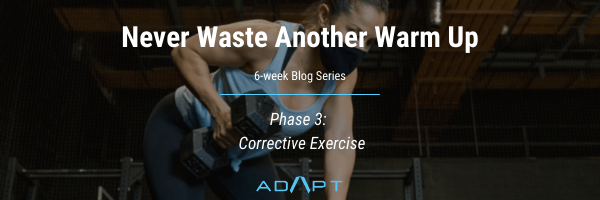
Let’s continue the discussion on properly warming-up for any physical activity venture. Phase one covered targeting soft tissue and phase two discussed bi-phasic stretching all allowing the human body to function as authentically as possible.
What is Corrective Exercise?
The term “corrective” gets misused a lot these days.
Personally, I don’t subscribe to the idea that every movement or exercise must be perfect before adding load or intensity. Good enough is truly good enough when it comes to enhancing performance and reducing likelihood of injuries.
Adding to the confusion are the endless options in the corrective exercise library. We need to simplify our programming and focus in on key movements that are targeting linchpins (aka weak links) of movement dysfunction or pain.
This doesn’t have to be complicated! When in doubt, go for a single catch-all corrective exercise that touches on the hips, core, spine, and shoulders, helping reinforce quality movement. Dr. McGill’s “bird dog” is a solid choice that far too many people mistakenly think is too easy for them.
If you, like many people, are at a loss trying to figure out if this stuff is actually working, I recommend just focusing on the three S’s of sound movement: stability, sequencing, and smoothness. Simply put, quality movement patterns or corrective movements should look effortless, smooth, and coordinated (integrated).
If yours aren’t quite there yet, no worries. That’s why it’s worthy investing 1-2 minutes into this Phase 3 block every training day. It’ll help you to reap the benefits of the warm-up, and help you maintain a functional and pain-free body.
Yours for greater strength,
– Peter (Head of Personal Training at ADAPT)